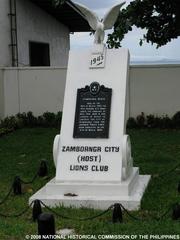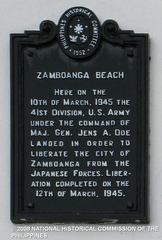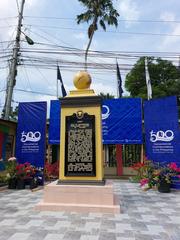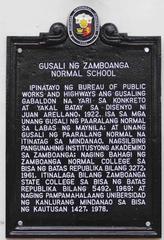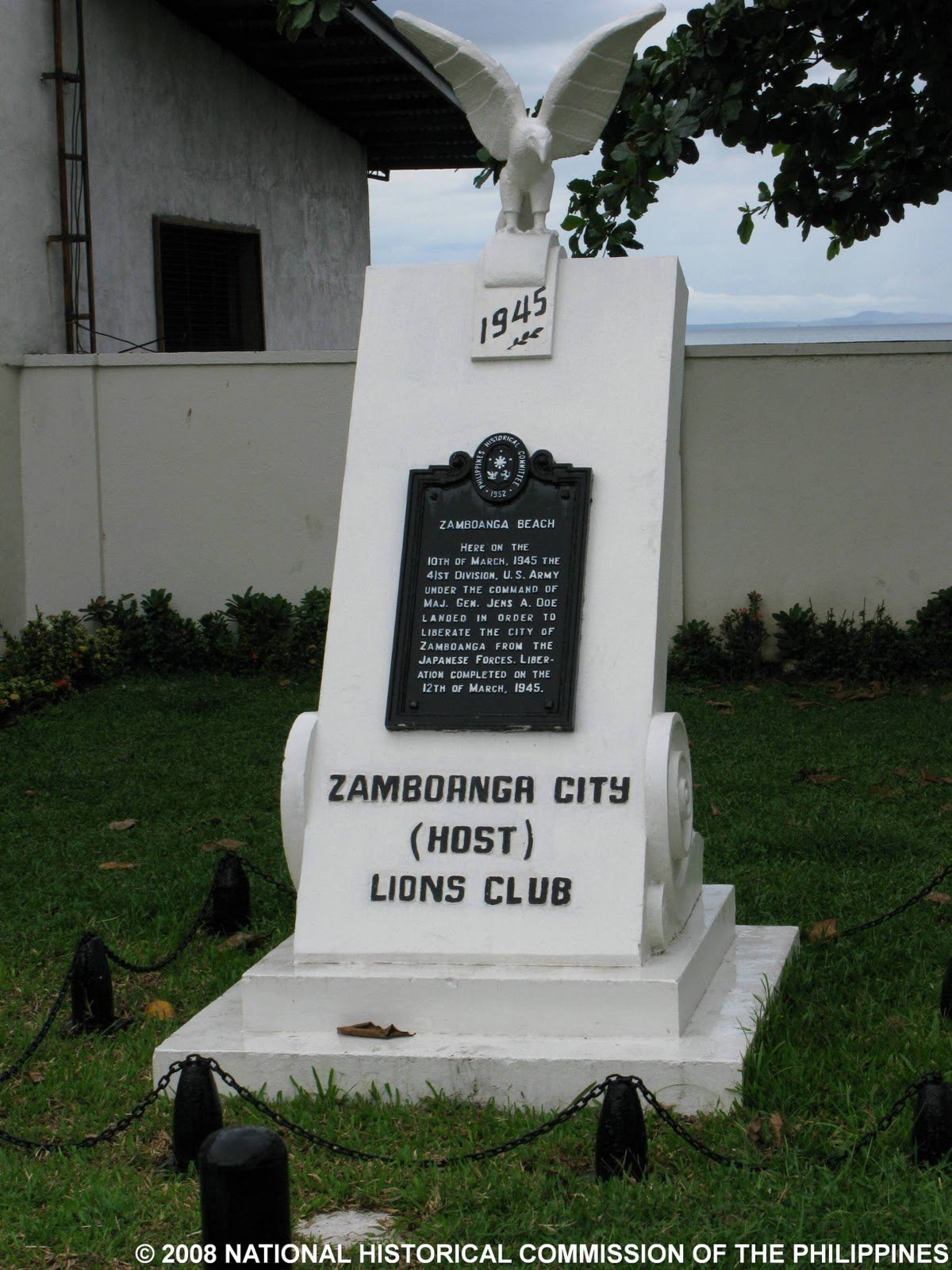
Zamboanga Beach Historical Marker: Visiting Hours, Tickets, and Complete Traveler’s Guide
Date: 14/06/2025
Introduction
Zamboanga City, fondly called “Asia’s Latin City,” boasts a rich maritime and multicultural heritage. One of its most significant historical sites is the Zamboanga Beach Historical Marker—a monument that commemorates pivotal moments in the city’s past, from Spanish colonization to the evolution of the unique Chavacano language. This guide brings together everything you need to know: the history, visiting hours, accessibility, nearby attractions, travel tips, and cultural etiquette to ensure a meaningful and seamless visit.
For further planning, consult official tourism resources and heritage sites (Zamboanga.com, 7641islands.ph, NHCP Official Site).
Table of Contents
- Historical Background
- Cultural and Military Significance
- Visiting Information
- Getting There & Accessibility
- Nearby Attractions
- Guided Tours & Special Events
- Visitor Tips & Etiquette
- Safety & Practicalities
- Frequently Asked Questions
- Conclusion & Further Resources
Historical Background
The Zamboanga Beach Historical Marker is a testament to Zamboanga City’s layered history as a strategic coastal stronghold. The Spanish established a permanent presence here in 1635 with the construction of Fort Pilar (originally Real Fuerza de San Jose), responding to frequent pirate raids. The beach served as a landing site for Spanish troops, missionaries, and settlers, making it a focal point for colonial expansion and cultural exchange (Zamboanga.com).
The area saw cycles of conflict and reoccupation, including the Spanish withdrawal in 1663 due to Chinese pirate threats, and their return in 1718. During the American era and World War II, the beach remained a key logistical hub. The marker, installed by the National Historical Commission of the Philippines (NHCP), succinctly captures these historic milestones (NHCP Official Site).
Cultural and Military Significance
Zamboanga Beach is not only about military history. It’s where cultures met and blended: Spanish soldiers, Jesuit missionaries, Visayan and Luzon migrants, and indigenous Subanen, Tausug, and Sama-Bajau peoples. This interaction fostered the birth of Chavacano, a Spanish-based creole still spoken by over 600,000 people (Zamboanga.com). The beach area embodies the city’s enduring multicultural spirit and is central to many of its traditions and festivals.
Visiting Information
- Location: Along Zamboanga City’s coastline, near Fort Pilar and Paseo del Mar (Mapcarta).
- Hours: Publicly accessible 24/7; however, daylight hours (6:00 AM–6:00 PM) are recommended for safety and optimal viewing.
- Tickets: No entrance fee; the marker and surrounding public spaces are free to visit (Lakad Pilipinas).
- Accessibility: Wheelchair-accessible paths and ramps; interpretive signage in English and Filipino.
- Facilities: Benches, restrooms at nearby Paseo del Mar and Fort Pilar, and food stalls within walking distance.
Getting There & Accessibility
- From Zamboanga International Airport: 10–20 minutes by taxi or tricycle (PHP 100–200 by taxi; PHP 10–20 per person by jeepney) (The Poor Traveler).
- Within City: Jeepneys and tricycles are plentiful; the site is a short walk from major landmarks like Fort Pilar and Paseo del Mar.
- Parking: Limited street parking; public transport is recommended.
- Walking: The city center is compact and safe for pedestrians during the day.
Nearby Attractions
Make your visit more rewarding by exploring these sites:
- Fort Pilar Shrine and Museum: A 17th-century Spanish fort, now a museum and Marian shrine.
- Paseo del Mar: Seaside park with food stalls and sunset views.
- Yakan Weaving Village: Demonstrations and sales of traditional handwoven textiles (Guide to the Philippines).
- Plaza Pershing & Zamboanga City Hall: Showcasing colonial architecture (7641islands.ph).
- RT Lim Boulevard & Canelar Barter Trade Center: For baywalks and unique shopping.
- Sta. Cruz Island: Accessible by boat, famous for pink sand and ancestral burial sites (outoftownblog.com).
- Pasonanca Park: Aviary, botanical garden, and tree house.
Guided Tours & Special Events
- Guided Tours: Local operators offer tours (starting at PHP 1,500/person) with customized itineraries. Book in advance for group rates (7641islands.ph).
- Festivals: The Hermosa Festival (October) and Fiesta Pilar feature processions, music, and the vinta regatta, drawing crowds to the marker and nearby sites.
- Heritage Trail: The marker is part of a curated walking/driving trail connecting Zamboanga’s most important landmarks (NHCP Historic Sites).
Visitor Tips & Etiquette
- Dress Code: Modest, lightweight clothing recommended; cover shoulders and knees at religious sites.
- Greetings: “Buenos días” (Spanish/Chavacano) or “Selamat” (local) show respect.
- Behavior: Maintain a respectful demeanor; avoid littering, loud conversations, or climbing on the marker.
- Photography: Allowed unless otherwise posted; ask permission before photographing people.
- Dining Etiquette: Wait for the host to begin a meal; use right hand for eating and passing items.
Safety & Practicalities
- General Safety: City center and tourist spots are safe with visible police presence. Stay vigilant, especially at night (Lakad Pilipinas).
- Emergency Contacts:
- Tourist Police: 117
- Local Police: (062) 991-5656
- Hospital: Zamboanga City Medical Center, Sta. Catalina
- Health: No special vaccinations required; standard precautions suffice.
- Weather: Best to visit during the dry season (November–May); sudden showers possible.
Frequently Asked Questions
Q: What are the visiting hours of the Zamboanga Beach Historical Marker?
A: Publicly accessible 24/7, but best during daylight.
Q: Is there an admission fee?
A: No, the marker and most nearby attractions are free.
Q: Are guided tours available?
A: Yes, local operators offer tours, especially during festivals.
Q: Is the site wheelchair accessible?
A: Yes, with paved paths and ramps.
Q: What is the best time to visit?
A: Dry season (January–May) or during the Hermosa Festival in October.
Conclusion & Further Resources
The Zamboanga Beach Historical Marker stands as a gateway into the city’s storied past, seamlessly blending military, cultural, and social histories. With free admission, convenient access, and proximity to other heritage sites, it’s a must-visit for any traveler to Mindanao. For a deeper dive, consult the Zamboanga City Tourism Office and NHCP, or enhance your journey with the Audiala app for interactive tours and real-time updates (Audiala).
Embrace Zamboanga’s vibrant heritage, connect with its unique communities, and let this historical marker be the start of your exploration along the city’s fascinating Heritage Trail (7641islands.ph, Zamboanga.com).
References & Further Reading
- Zamboanga.com
- 7641islands.ph
- NHCP Official Site
- The Poor Traveler
- Lakad Pilipinas
- PhilStar Life
- Guide to the Philippines
- Mapcarta
- Zamboanga City Tourism Office
